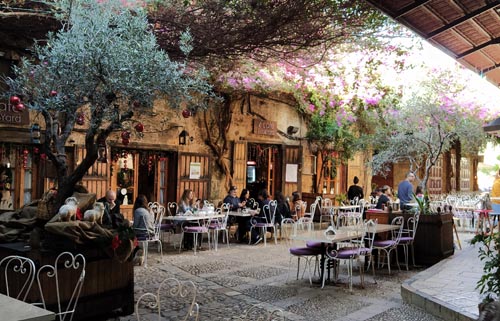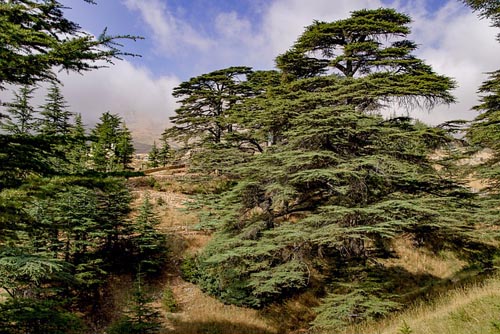Sights
In Beirut you will find most of Lebanon sights. But beyond its captivating capital, Lebanon with its vast cultural heritage and long history has much to reveal. Places such as the city of Baalbek with important Roman and Hellenistic buildings, the Bekaa Valley with its famous wineries, the traditional Tripoli and the Bible with the magnificent caves of Jeita are some of the beautiful sights that one of the most interesting countries in the Middle East can provide.
Beirut
Beirut is a glamorous and at the same time turbulent city, with huge history of great contrasts. Here you will find several places worth visiting, one of which the excellent National Museum of Beirut; a true jewel of the Middle East with unique exhibits. One kilometer south of Witness Square you will find the Beit Beirut, a museum dedicated to the civil war (1975-1990), housed in a building with war marks on the outside. Art lovers will find their "paradise" at the Sursok Museum. But beyond the museums, "Paris of the East", so called Beirut, has much more to offer. Do not miss to visit the most famous part of the city, the much photographed Raouche Rocks but also to walk along the coastal road. In Beirut you will enjoy your walks in the morning but it is good to keep your strength for the night as it's a vivid city with great nightlife. In conclusion, Beirut is a city for everyone and everything; it is a unique mix of art, gastronomy, history, culture, natural beauty, music and entertainment that will undoubtedly enchant you.
Baalbek
85 km northeast of Beirut is the ancient city of Baalbek, which in Roman times was known as Heliopolis. It's a complex of ancient temples which have been preserved in fairly good condition. The temple of Bacchus and the temple of Zeus are two of the largest and most imposing temples of Roman times. That is why in 1984 Unesco declared the ancient city of Baalbek a World Heritage Site.
The ticket costs 15000 LBP.
Tripoli
In the north of the country, about 1:30 from Beirut, is the second largest city in Lebanon, Tripoli; a really traditional city. It's worth wandering in the picturesque souks of the old city and visiting the citadel of Tripoli which was built in 1103 by Raymon De Saint-Gilles.
Byblos
Byblos or Jbeil is a coastal city about 35 miles [35 km] north of Beirut. It is considered the oldest continuously inhabited city in the world and in 1984 it was included in the list of world heritage sites by Unesco. Stroll through the city's picturesque cobbled streets and relax in one of the city's many cafes. Do not forget to visit the castle of Byblos with its wonderful view and long history.
Tire & Sidon
Travelling to the southern part of the country leads to two interesting cities, Sidon and Tire. These are two ancient Phoenician cities with important monuments of that time. Sidon is Lebanon's third largest city and is located 45 kilometers south of the capital Beirut. In Sidon there are several attractions such as the Castle of the Sea with a wonderful view and the unique soap museum of the city, which is located in the building of an old soap factory. As in almost every city in the Middle East, in Sidon strolling in the old souks can be a real feast of your senses. Southern than Sidon is Tire, a small coastal city in Lebanon that once was an important port for ancient Phoenicians. There you will find unique monuments of the ancient world such as the Roman Hippodrome and the Ancient City of Tire which in 1984 was included in the list of UNESCO World Heritage Sites.
Cedars of God
The cedar of Lebanon is the national emblem, as it is also depicted on the country's flag. It is one of the most magnificent trees in the world, which grows on Mount Lebanon. Near the city of Basari in northern Lebanon is the Cedar Forest of God which consists from about 375 trees. In 1998, Unesco added the Cedar Valley to its World Heritage List. If you decide to visit the Cedar Forest of God you could also pay a visit to the museum of Khalil Gibran which is located in a restored Carmelite monk monastery on the outskirts of the city and is dedicated to the famous Lebanese poet Khalil Gibran (1983).
Beside the above attractions you will also find many other points of interest such as the caves of Jeita (Jeita Grotto), the Archaeological Site of Anjar, the Beiteddine Palace, but also several places of exceptional natural beauty such as the Baatara and Baakline waterfalls.





